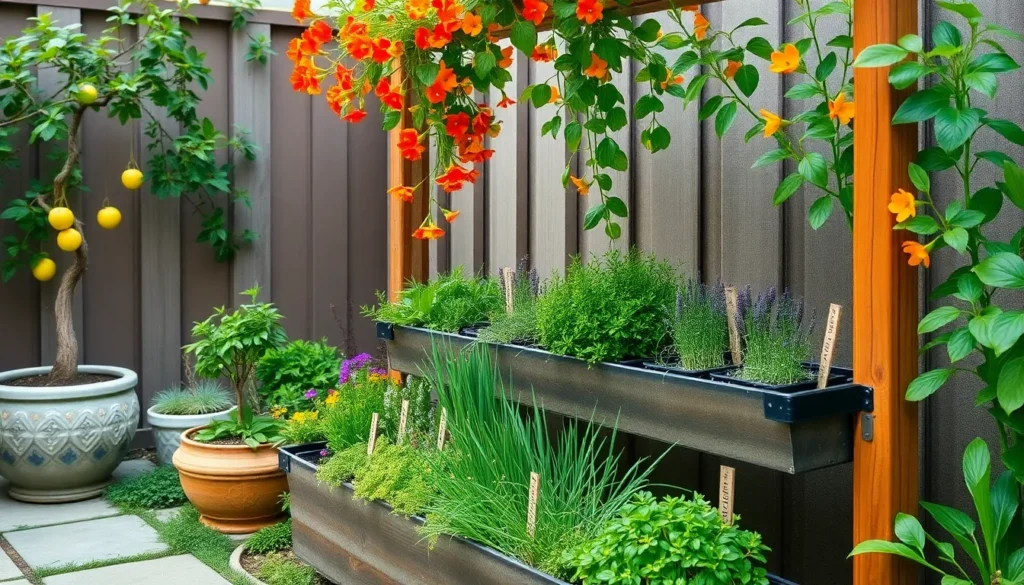Whether you’re just starting your gardening journey or you’re a seasoned green thumb, transforming a small yard into a lush oasis is a rewarding challenge. “Best Outdoor Plants for Small Yards” is your essential guide to selecting plants that thrive in compact spaces, ensuring your outdoor area bursts with life and color without overwhelming your limited square footage.
Imagine stepping outside to a vibrant garden that feels like a personal retreat, even if your yard is modest in size. This guide offers a carefully curated list of plants that are not only beautiful and resilient but also easy to care for, providing you with practical tips and techniques to maximize your gardening success. With our expert advice, you’ll feel confident in your ability to cultivate a stunning outdoor space that reflects your unique style and brings you joy every day.
Dwarf Boxwood (Compact Evergreen Elegance)

Dwarf Boxwood is a wonderful choice for small yards, offering compact evergreen elegance that suits any garden style. These shrubs are known for their dense, lush foliage, which provides an excellent backdrop or border for more colorful plantings.
To ensure your dwarf boxwood thrives, plant it in well-draining soil and a location that receives partial to full sunlight. Water the plant deeply once a week, especially during dry spells, to maintain healthy growth.
Pruning is a crucial task to keep your boxwood in shape; trim it lightly in late spring to maintain its compact form. For an advanced tip, consider using a balanced, slow-release fertilizer in early spring to promote vigorous growth and lush foliage.
One of the great advantages of dwarf boxwood is its versatility, as it can be used in hedges, topiary, or as standalone accents. Remember to mulch around the base of the plant to help retain moisture and suppress weeds, providing extra care for your boxwood’s root system.
Vertical Planting Grids (Maximize Space Efficiency)
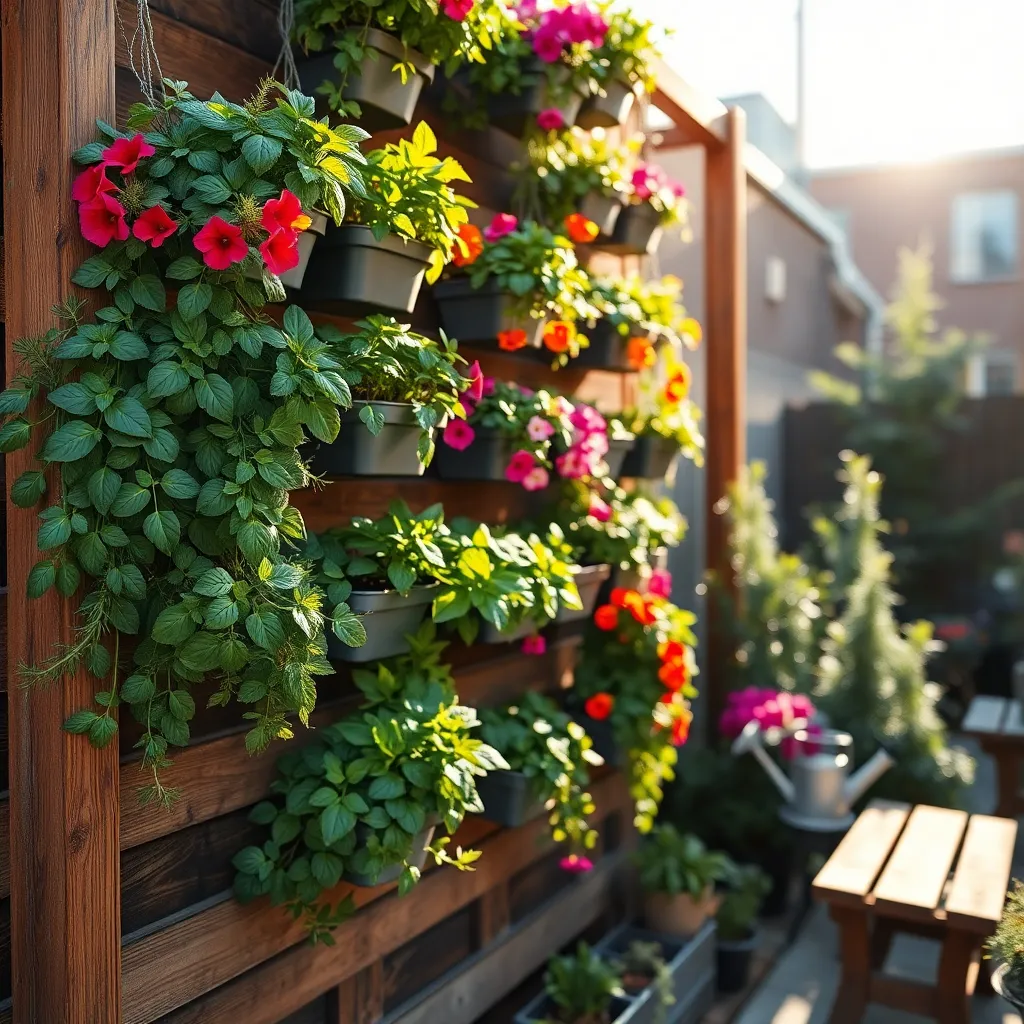
For gardeners with limited space, vertical planting grids offer a creative solution to maximize every inch of your yard. These grids allow you to grow a variety of plants vertically, making efficient use of wall space while adding a lush, green backdrop to your outdoor area.
To get started with vertical planting, choose a sturdy grid or trellis that can support the weight of your chosen plants. Metal or wooden grids are popular options due to their durability and ease of installation.
When selecting plants for your vertical garden, consider species that thrive in compact spaces, such as herbs, trailing flowers, or small vegetables. Climbing plants like ivy or jasmine are also excellent choices, as they naturally grow upwards and can quickly cover a grid with vibrant foliage.
Ensure your plants receive adequate water, as vertical gardens can dry out faster than traditional plots. Implementing a drip irrigation system can be a highly effective way to maintain consistent moisture levels, reducing maintenance and ensuring healthy plant growth.
For those seeking a more advanced setup, you can incorporate hydroponic systems into your vertical grids. This method allows for soil-less cultivation, which can increase growth rates and yield, making it an exciting option for experienced gardeners looking to experiment.
Japanese Maple ‘Shaina’ (Vibrant Foliage in Minimal Space)
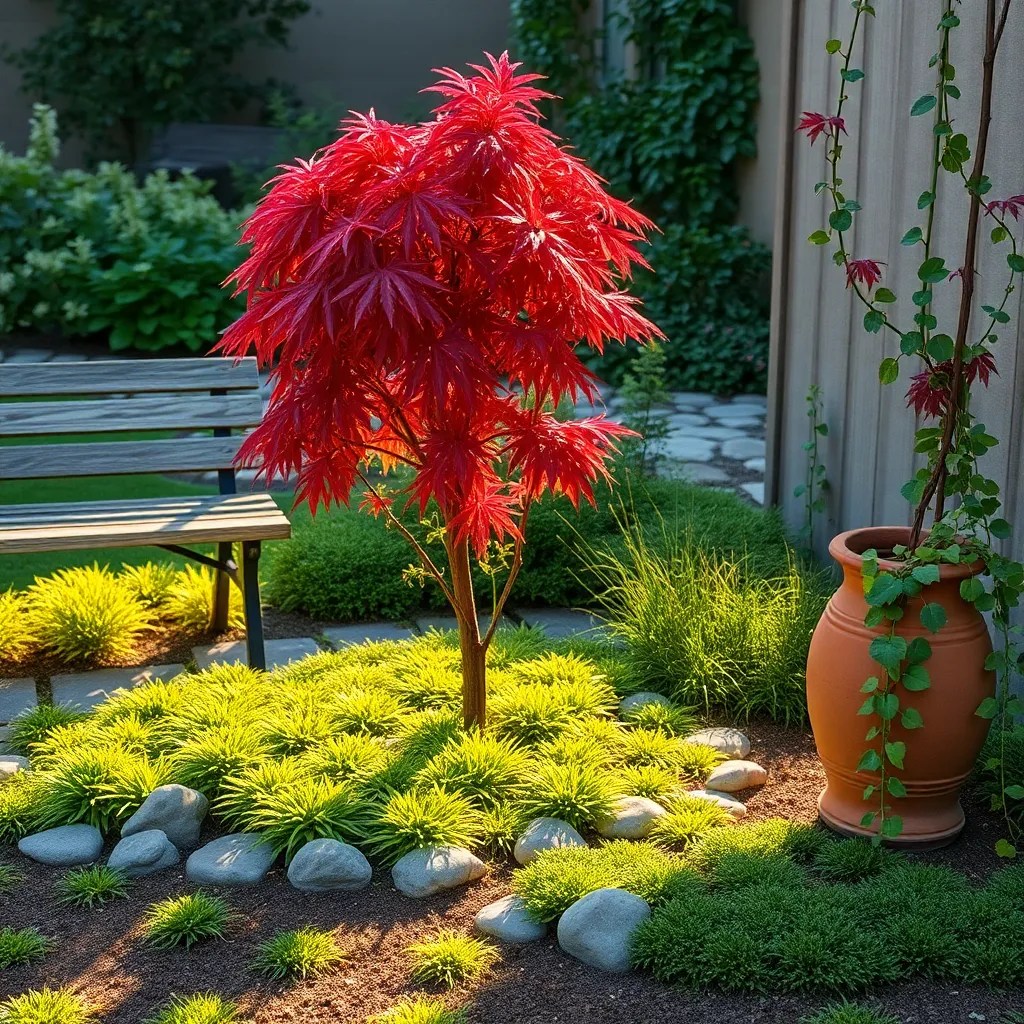
For gardeners with limited space, the Japanese Maple ‘Shaina’ offers a compact yet vibrant solution. This stunning tree is perfect for small yards due to its slow growth and dense, compact form.
To ensure your ‘Shaina’ thrives, plant it in a location with partial shade for optimal leaf color and health. It prefers well-draining, slightly acidic soil, so consider amending your garden bed with peat moss or compost.
Regular watering is essential, especially during dry spells, but be cautious not to overwater. A mulch layer around the base will help retain moisture and protect the roots from extreme temperatures.
Pruning isn’t often necessary, but if needed, it’s best done in late winter to maintain its shape. For those looking to enhance their gardening skills, consider shaping your ‘Shaina’ with careful pruning to achieve an elegant, bonsai-like appearance.
Self-Watering Planters (Low-Maintenance Hydration)
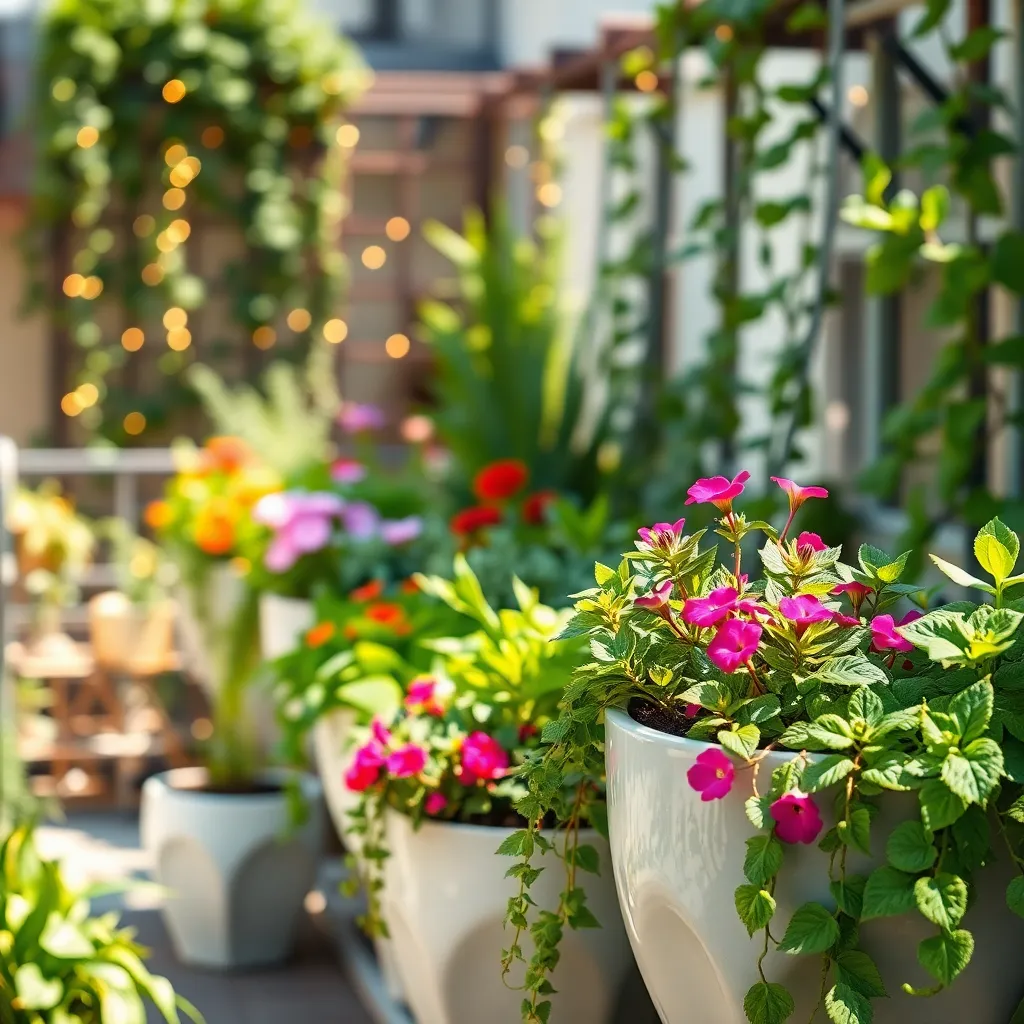
Self-watering planters are a brilliant solution for gardeners seeking low-maintenance hydration for their outdoor plants. These planters feature a reservoir system that ensures your plants receive consistent moisture, making them ideal for busy gardeners or those who travel frequently.
To get started with self-watering planters, choose pots that have an integrated water reservoir and a wicking system. The wicking system draws water up to the plant roots, allowing for consistent and efficient hydration without the risk of overwatering.
When selecting soil for self-watering planters, opt for a well-draining mix with good aeration to prevent root rot. Incorporating perlite or coarse sand can enhance drainage, while adding peat moss can help retain moisture.
For beginners, a simple routine of filling the reservoir once a week is often sufficient, depending on your climate and the plant type. Advanced gardeners can experiment with different plant varieties that thrive in such setups, including herbs, vegetables, and small flowering plants, maximizing their outdoor space with minimal effort.
Creeping Thyme Groundcover (Fragrant, Space-Saving Solution)
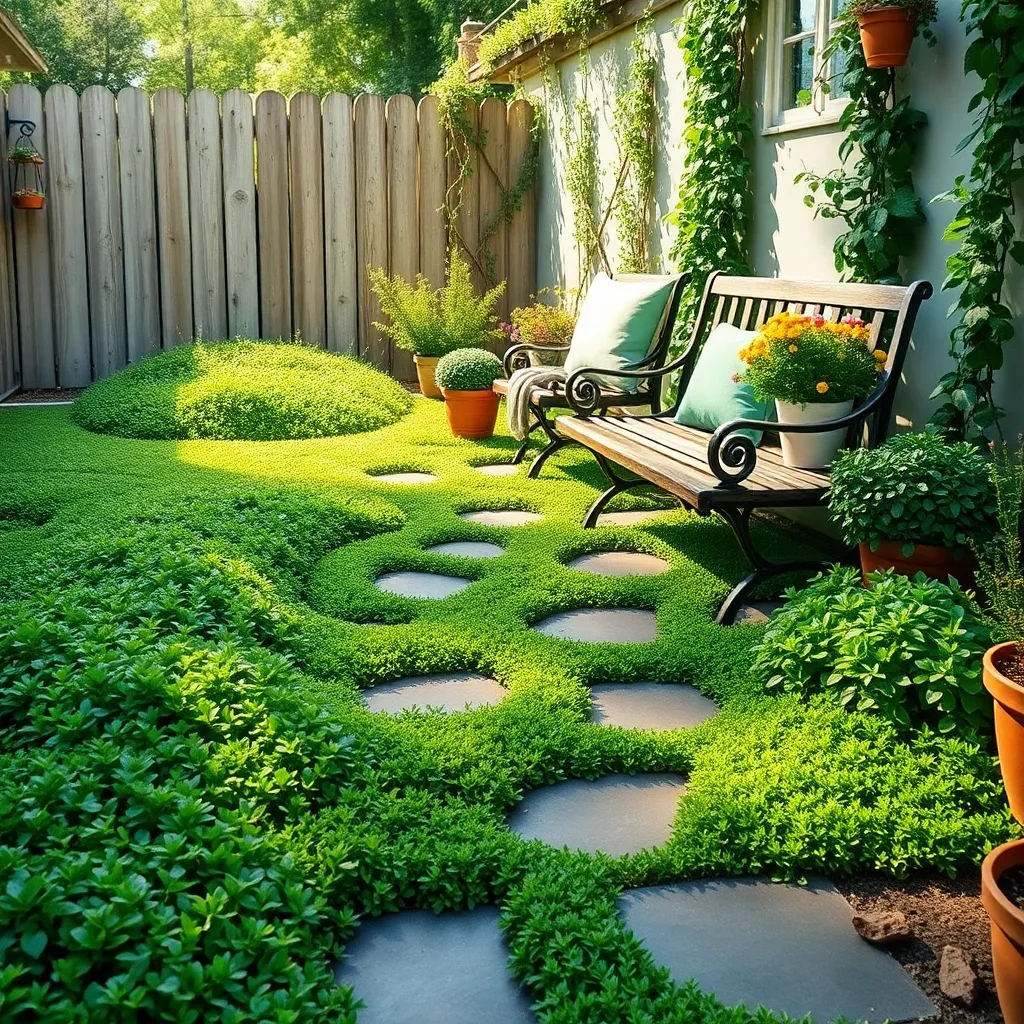
For a beautiful and fragrant groundcover option in small yards, consider planting creeping thyme. This hardy perennial not only saves space but also releases a delightful aroma when stepped on or brushed against.
Creeping thyme thrives in well-draining soil and requires full sun to flourish. To maintain its lush appearance, water it sparingly, allowing the soil to dry out between waterings, as thyme is drought-tolerant once established.
Beginners will appreciate its low-maintenance nature, while experienced gardeners can experiment with different varieties like ‘Elfin’ or ‘Wild Thyme’ for varied textures and hues. For best results, plant creeping thyme in early spring or fall, spacing plants about 6 to 12 inches apart to allow for spreading.
To ensure robust growth, provide a light application of balanced fertilizer in the early spring. Advanced gardeners can also propagate creeping thyme through cuttings or division, making it a versatile addition to any garden.
Conclusion: Growing Success with These Plants
As we’ve explored, the five key concepts to nurturing both your small yard and your relationships are: choosing the right plants that suit your space, understanding the importance of adaptability, nurturing with care and consistency, fostering an environment of growth, and embracing the balance of variety. Just as you meticulously select plants to complement and flourish within your yard, so too should you approach your relationships with intentionality and mindfulness.
To take immediate action, why not start by choosing one plant from our list and inviting your partner or loved one to plant it together? This collaborative activity can serve as a beautiful metaphor for the shared effort and nurturing required in relationships.
Remember, the success of your relationships is an ongoing journey. Bookmark this article for easy access, ensuring that these insights remain at your fingertips whenever you need a reminder or inspiration. As you cultivate your yard and your connections, know that the seeds of effort you plant today will blossom into the vibrant relationships of tomorrow. Embrace this moment to grow and nurture bonds that will stand the test of time.

